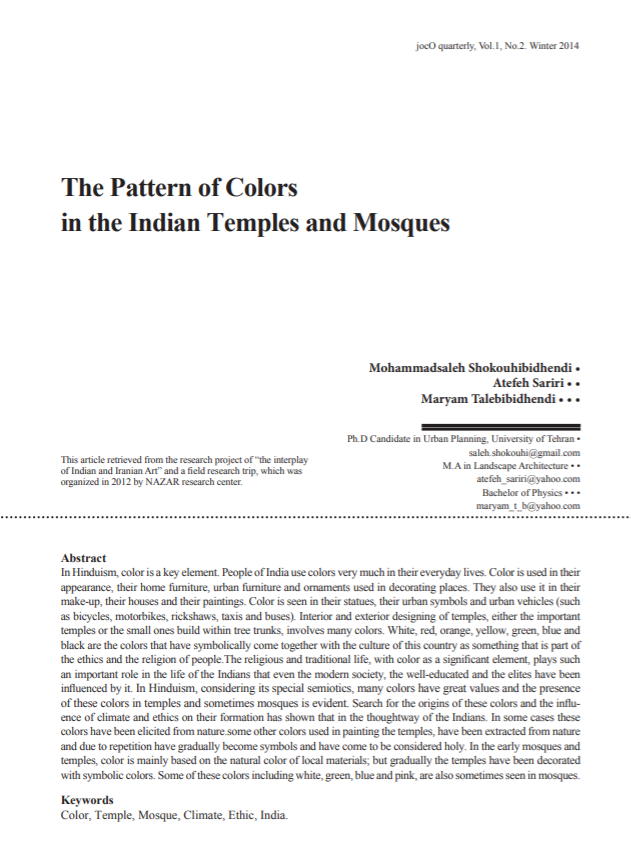
In Hinduism, color is a key element. People of India use colors very much in their everyday lives. Color is used in their appearance, their home furniture, urban furniture and ornaments used in decorating places. They also use it in their make-up, their houses and their paintings. Color is seen in their statues, their urban symbols and urban vehicles (such as bicycles, motorbikes, rickshaws, taxis and buses). Interior and exterior designing of temples, either the important temples or the small ones build within tree trunks, involves many colors. White, red, orange, yellow, green, blue and black are the colors that have symbolically come together with the culture of this country as something that is part of the ethics and the religion of people. The religious and traditional life, with color as a significant element, plays such an important role in the life of the Indians that even the modern society, the well-educated and the elites have been influenced by it. In Hinduism, considering its special semiotics, many colors have great values and the presence of these colors in temples and sometimes mosques is evident. Search for the origins of these colors and the influence of climate and ethics on their formation has shown that in the thought-way of the Indians. In some cases these colors have been elicited from nature. Some other colors have been used in painting the temples, have been extracted from nature and due to repetition have gradually become symbols and have come to be considered holy. In the early mosques and temples, color is mainly based on the natural color of local materials; but gradually the temples have been decorated with symbolic colors. Some of these colors including white, green, blue and pink, are also sometimes seen in mosques.
In the early mosques and temples, color is mainly based on the natural color of local materials; but gradually the temples have been decorated with symbolic colors, and this document discovers that.
I agree to the terms outlined below:
You agree to upload and assign Mosqpedia Database the rights to use the content worldwide and in perpetuity across all current and future media platforms. Mosqpedia Database may edit, copy, adapt and translate your contribution.
The content will be distributed under the Creative Commons Attribution-Deed – Attribution-NonCommercial-NoDerivatives 4.0 International – Creative Commons
All data will be stored in line with data protection regulations.